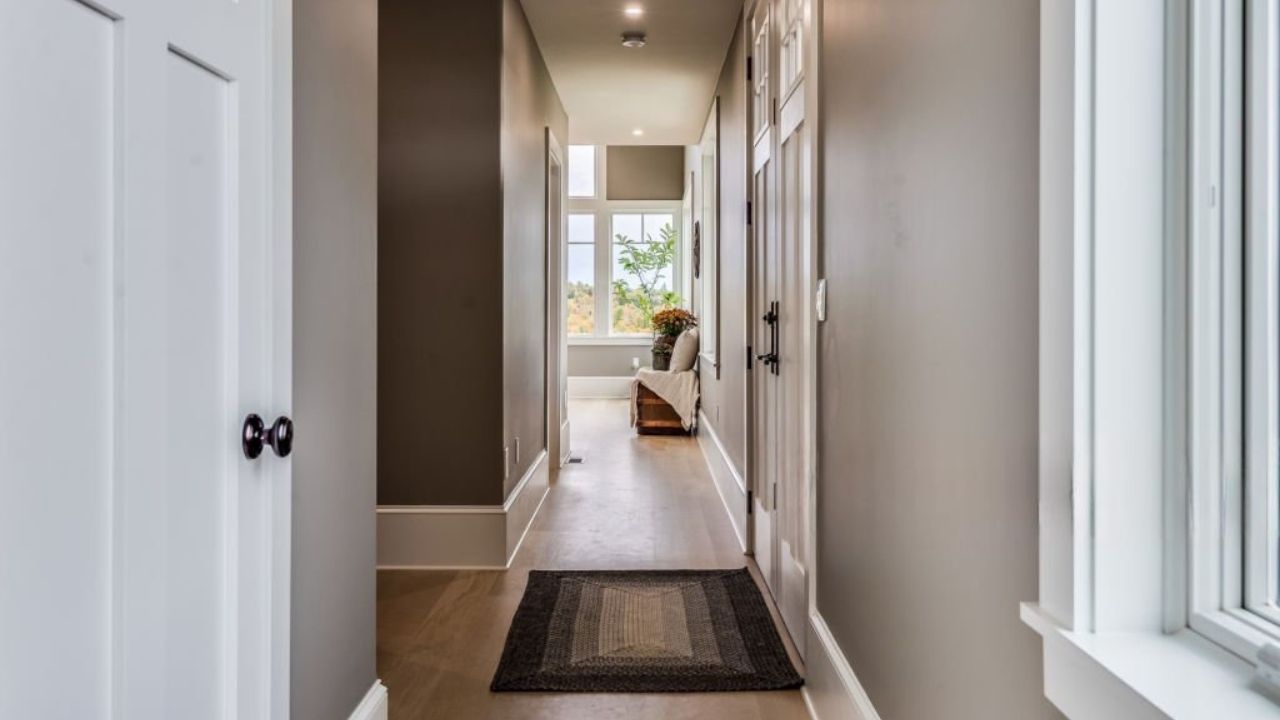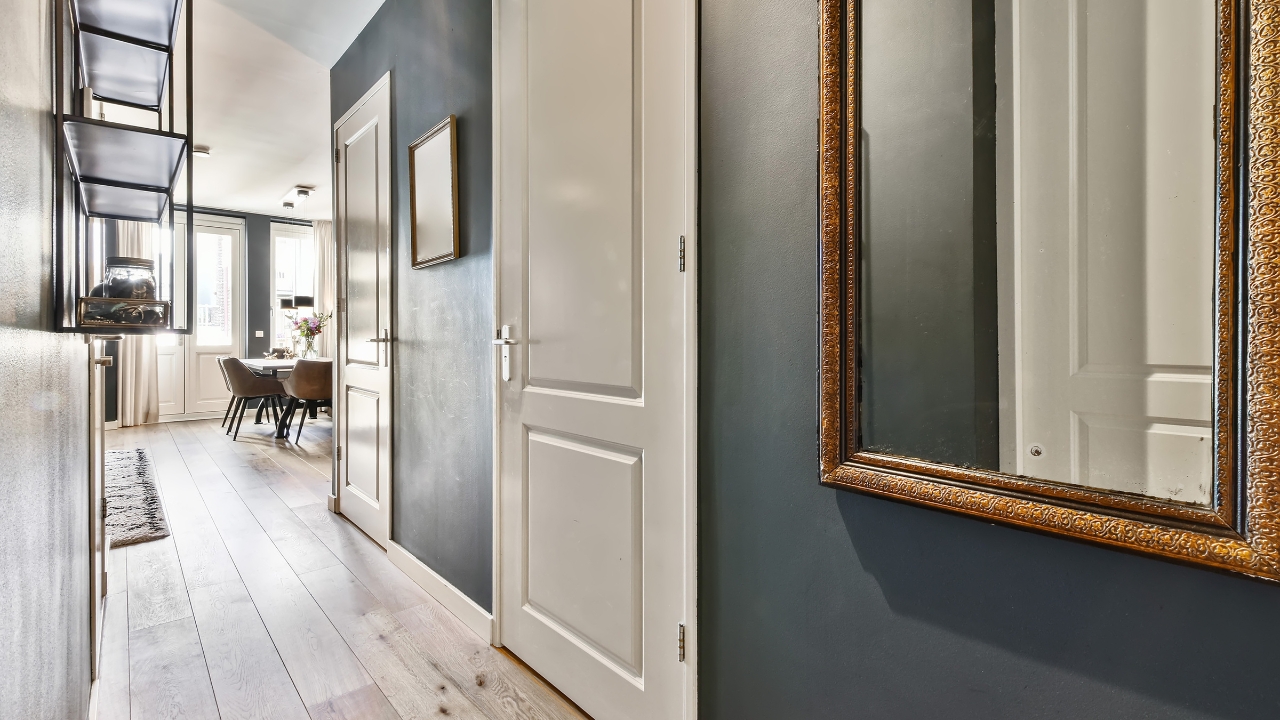How to make your hallway feel like a feature instead of a pass-through
Hallways do more than connect rooms. They set the tone between spaces and quietly tell you how the house is cared for. When you give yours a job—light, storage, display—it stops feeling like wasted square footage and starts working with the rest of the home.
Decide what the hallway needs to do
Start by naming the job. Is it a spot for family photos, a place to stash daily gear, or the lane guests walk through first? Pick one priority and let every decision support that. If the hall is narrow, storage might mean closed cabinets and a single ledge instead of hooks and shelves. When the job is clear, clutter has fewer excuses to collect on the floor.
Fix the light first
Hallways look tired when they’re dim or lit with cold bulbs. Swap to warm white (2700–3000K) and make sure fixtures are spaced so light overlaps without hot spots. In a long run, repeat a simple flush mount every eight feet or so. If you can’t hardwire anything new, add a plug-in picture light or battery sconce over art at eye level. Light that grazes the walls makes paint read richer and the space feel intentional.
Set a real eye line
Hallways are all about sightlines. Hang art with bottoms aligned and keep frames consistent so the wall reads calm. A single, larger piece beats five tiny ones every time. If the hall turns, give the far wall a focal point—a mirror that catches light, a simple console with a bowl—so the view has a destination instead of a blank stop.
Treat the floor like a runway

A runner does more than soften footsteps—it pulls the hallway together. Choose something that spans most of the length with a few inches of floor showing at each end. In busy homes, flat-weave or low-pile is easier to clean and won’t fight doors. Keep colors within your house palette so the hall handshakes with the rooms it connects.
Use storage that doesn’t grab the walkway
Hallways die when baskets and shoes creep into the lane. If you need storage, go vertical and closed. A shallow cabinet with a painted face, a wall-mounted mail sorter with lids, or a narrow bench with hidden compartments gives you capacity without a mess. Measure first: you want doors that open cleanly and a minimum of 36 inches left for the path.
Repeat trim and hardware rules
Nothing dates a hallway faster than random trim profiles and mismatched knobs. Paint doors and casing in the same color and sheen you use elsewhere. Keep hinges, levers, and strike plates in one finish for the whole run. Hallways are where every door sits side by side—consistency pays off here more than anywhere.
Add one living element
Even a low-light plant on a wall shelf changes how a tight hall feels. If plants struggle in your space, use a clear vase with branches and swap them seasonally. The goal is a small, quiet layer that softens drywall and sharp corners. One is enough; you don’t want a jungle in a traffic lane.
Control the noise
Hallways close to bedrooms or the main living area can echo. A runner, lined curtains at the far end, or a fabric pinboard on one wall helps absorb sound without making the space busy. If doors slam, add soft-close catches so the house feels calmer during nap time and late evenings.
Give it a two-minute reset

Halls collect items because they’re convenient. Make a rule: anything in the hall has a closed home within reach. At night, do a quick scan—shoes to the bench, mail to the sorter, toys to a bin. When the lane stays clear, the hallway feels like part of the house, not a staging area.
*This article was developed with AI-powered tools and has been carefully reviewed by our editors.







